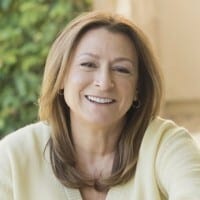Customer experience has always been an important part of the business equation. If you delivered a great experience, you were able to attract and retain customers.
Today, the value of a positive customer experience is even more important. It’s the most effective way to differentiate your business and also the most competitive battleground. Digital revolution, quickly changing consumer expectations, and rapid technological advances have raised the bar. Businesses need to constantly refocus their strategies to make sure their customer experience initiatives delight their fickle customers.
- By 2018, more than 50% of all organizations will significantly change their business models in order to improve their customer experience (Gartner)
- Customer experience will overtake price and product as the key brand differentiator by 2020 (Walker)
- 72% of businesses consider improving their customer experience a top priority (Forrester)
- Companies that excel at customer experience grow revenues 4-8% above the market, on average (Bain & Co)
- Each year, businesses lose around $24.5 billion in revenue because of poor customer experience (Decibel Insight)
- 86% of buyers would pay more for a better customer experience (Walker)
It’s becoming critical for businesses to develop well-thought-out strategies to identify the right approaches and measure the success of their customer experience initiatives.
This is why we reached out to 23 customer experience experts and asked them two key questions:
1) What is your #1 tip for prioritizing CX initiatives?
2) What are your favorite metrics to measure the success of CX initiatives and why?
Without further ado, here’s what they said:
1-Shep Hyken, Chief Amazement Officer, Shepard Presentations
Shepard Presentations | LinkedIn

First, look at what the biggest friction points are for your customers and start to eliminate them, one at a time. Second, discover which are the easiest friction points to eliminate. Consider the speed to elimination and choose what seems most appropriate. And, once the friction is eliminated, start to look at all customer touchpoints with an eye for enhancing them where possible.
I’m a big fan of NPS. You get a lot of information out of one question. I believe there needs to be at least one follow up question which contextualizes the customer’s answer. A question like, “Why did you give us that score?” is a good start. It’s nice to have an open-ended question to get more customer insight.
A CSAT survey, done well, is also a great way to measure success and customer motivation.
Rather than a numerical metric, consider a behavioral metric. This one is a simple question, and there may be no other metric more powerful: Did the customer come back? (You can add how many times and how often to get more insight.)
Looking to eliminate your customer’s pain points? You can find more information here.
2-David Verhaag, VP Client Experience, Degreed

The first thing I consider is whether or not the initiative is truly customer focused. There are a lot of great initiatives that might help our organization, our metrics, our team performance, but I prioritize based on whether a particular initiative helps the customer first.
My top three metrics for measuring CX are Product Adoption (my experience is in SaaS), Customer Retention, and NPS.
Adoption is a leading indicator of success, value, and experience. Retention, though a lagging indicator, is one of the most critical factors in the health of a SaaS business. And Net Promoter Score, while it is not perfect, it is a good benchmark for comparing our experience and challenging the customer to answer whether they would recommend us.
3- Blake Morgan, Customer Experience Futurist, Bestselling Author

Your priority customer experience initiative should be the one that addresses the biggest pain point for customers. Solve your customer’s biggest headache and you will immediately improve their happiness levels and in turn your company’s growth.
My favorite metric is NPS. It is as important today as when it was created. NPS is a quick way for companies to learn about their customers. Customers are incredibly unlikely to take a full email survey, so NPS is often the best and most accurate feedback you’ll receive. It basically boils down the entire customer experience into one question.
If the customer says they are likely to recommend the service to a friend, they probably had a good experience and the company can continue to follow their current path. If a customer says they won’t recommend the service to a friend, the company can follow up to find out more about what went wrong with that customer’s experience.
4-Bret Bonnet, Co-Owner and Founder, Quality Logo Products Inc.
Quality Logo Products Inc. | LinkedIn

Positive CX interactions breed loyalty, so we prioritize our initiatives all around customer retention. In an industry with tens of thousands of competitors, we set the bar high and pay a pretty penny to play in the digital marketing world because we want our customers to keep coming back.
We tend to look at goal completions in Google Analytics, leads/conversions in the CRM, and first response time with our customer service and sales teams.
Ultimately, we’re looking at our number of leads every single day to see if the change caused an increase or a decrease against the trend. Over time, we also look at how these leads are converting into orders invoiced to see if the customer experience is bringing in high-quality leads or not.
5-Marlyne Pierce, VP New Product and Innovation at Citi & The Founder of Modern Mogul Ventures
Modern Mogul Ventures | LinkedIn

The most critical factor in prioritizing objectives is to connect customer strategy with the overall business strategy. The success of a company hinges on successfully taking customers on a journey from sales to service that delights them and leads them to want to highly recommend the service to friends and colleagues. When identifying what to work on, the company leadership needs to evaluate what aspect of the customer journey will have the biggest impact on their bottom line and review the key metrics tied to that bottom line.
As an example, a company might need to reduce sales cycle time to increase sales and acquisition numbers or decrease service calls with better education and more self-serve option or product improvements to save on costs and increase NPS.
The business numbers that matter are the ones that relate to customers. Once leaders are clear where the biggest impact will be on the sales to service satisfaction journey, it naturally informs the proper priority.
NPS – this helps you to increase reviews and referrals from happy clients, and thus, decrease marketing and servicing costs.
Cost per sale – companies should be looking at ways to decrease the cost to acquire and serve customers on an ongoing basis. This leads to scale and more revenue.
CLV (Customer Lifetime Value) – the more you can increase the value of one customer to the business, the better outcome for profits and your ability as a business to increase loyalty and advocacy in customers. This also decreases acquisition costs over time, a critical metric for growing businesses as noted.
6-Jeannie Walters, CEO, 360Connext

Tie the initiative with how it will impact both the business results and the actual experience for customers.
I really don’t believe there’s a perfect metric. It depends on a lot of things.
Customer-centric metrics, like NPS or Customer Satisfaction – those help you see progress on a regular basis.
Business results – did that improvement help convert more prospects? Increase renewal rates? Decrease customer churn?
Reducing customer effort – tracking this with Customer Effort Score (CES) is one way to make sure the entire customer journey is improving.
7- Ian Golding, Global Customer Experience Specialist, Customer Experience Consultancy
Customer Experience Consultancy | LinkedIn

Having a good prioritisation tool is essential. It’s a tool to help narrow down your focus from many initiatives to your top five. A great tool to do this is a ‘control/impact matrix’, which looks at whether or not the initiative is ‘in your control’, and if it will have a high, medium or low impact on CX. To identify the #1, you should rely on facts.
I do not have a favourite CX metric. Every organisation is different and it is critical to choose the right metric for the right situation. When it comes to capturing Voice of the Customer, every organisation should consider capturing CSAT (Customer Satisfaction), NPS (Net Promoter) and CES (Customer Effort) – the more metrics the merrier.
However, I also advocate measuring Voice of the Employee (VOE) and Voice of the Process (VOP) to create the most robust CX measurement system possible.
8- Andy Hanselman, Partner, Andy Hanselman Consulting
Andy Hanselman Consulting | LinkedIn

A priority has to be the ‘areas of pain’ for your customers: those blockages that stop them getting what they want, how and when they want it, the things that irritate or annoy them, and the things that stop you from ‘making the sale’.
NPS – it’s a good all round measure of your customer’s views.
The # / % of customers who are ‘completely happy’ with the experience they have had. This is defined by asking questions like: “Are you completely happy?” (yes/no, why/why not?). It’s a tough question to ask but it provides a great insight into the expectations of your customers and whether you are meeting or exceeding them.
The number of ‘mentions’ for great service particular staff members receive from your customer feedback process / unprompted – it helps you identify and recognise those who are ‘delivering’.
9-Peter Lavers, Director, WCL Customer Management
WCL Customer Management | LinkedIn

My top tip for prioritization would be to apply Customer Value Management (CVM) rigor to the initiatives that need prioritizing. In my experience, the value of all customers is not the same in the vast majority of companies, yet many CX initiatives try to “wow” everybody or develop treatments that aren’t differentiated by customer value.
Companies should be prioritizing the initiatives that target specific value/needs segments – not “one size fits all” programmes.
For example, I’d prioritize: a programme that recognises the value and loyalty of your best customers in order to deepen commitment and foster advocacy; an initiative to reduce the cost-to-serve of marginal and unprofitable customers while maintaining appropriate service levels (we simply can’t afford to “wow” everybody – at least not in the same way); an investment in an AI-powered & real-time content personalization, dynamic pricing and offer delivery mechanism to create unique tailored customer journeys based on current and potential customer value (this is becoming possible).
Metrics to use are:
Customer Profitability (not just revenue) because that keeps us in business and our shareholders happy.
Retention Rate of Active/Profitable Customers because CX can’t be a success if we’re losing our good customers.
Long-term brand/company trust and commitment from customers and staff because short-termism is a killer of CX.
10-Michael Replogle, Senior Contact Center Consultant, Customer SERV

First, you begin by obtaining benchmark data for whatever industry you are in. From there you need to measure your CX data by surveying customers: establish baselines from the responses, conduct a gap analysis between the industry benchmarks and your baseline data. Then it’s important to develop corrective measures where necessary by improving processes such as training, performance management or leveraging various forms of technology, i.e. adding or improving an IVR or other self-serving technologies, adding a new channel for easing the customer effort in obtaining a resolution, etc.
Good metrics are NPS – Net promoter score, CES – Customer effort score, CSAT – Customer Satisfaction and Customer sentiment via Social Media.
The above metrics, especially the top two, have shown to be the best indicators of the overall customer experience.
11-Adam Toporek, Customer Service Expert, CTS Service Solutions
CTS Service Solutions | LinkedIn

Choosing between potential CX initiatives can be extremely difficult, and it helps to step back and ask one simple question: Of all the financially and operationally viable opportunities before us, which initiative will make our customer’s experience so emotionally resonant that it differentiates us and creates sustainable competitive advantage?
I believe that metrics are tools to be used in a specific circumstance, so I don’t have any favorites. That said, I believe almost any organization can benefit from using metrics in the following three categories.
1. A customer satisfaction/happiness metric. This can be CSAT, NPS (which I believe fits in this category), or any other similar measurement.
2. A hassle/effort metric. This can be Customer Effort Score or a metric that measures a relevant part of the journey such as hold time or response time.
3. An employee happiness/engagement metric. This can be Employee NPS, turnover rate, or any number of engagement measurements. In the end, metrics are merely indicators. Asking the questions that lead to the “why” behind the numbers is where the magic truly happens.
12- Jeanne Bliss, Owner, Customer Bliss

Start by prioritizing based on knowing what customer goals are. Value erosion occurs when you get in the way of customers achieving their goals. Pick their top two and examine if you are helping or hindering. Focus resources on a few. Don’t boil the ocean!
Growth of the customer asset. Know the volume and value of incoming customers, subtract from that the volume and value of lost customers. Do the math. That equals your net customer asset growth. Without measuring the growth or loss of the customer relationship, we don’t elevate the work to growth and revenue.
Movement within the customer relationship. Are your customers by segment growing or diminishing their relationship with you. What behaviorally are they doing that is impacting growth.
Growth of the employee asset. What’s on the inside shows up on the outside. Are you keeping and growing and enabling your best employees to thrive?
13-Brandon Seymour, Founder, Beymour Consulting

In my opinion, the metrics are much more important than the initiative itself. Many of the metrics we use to assess customer satisfaction are inherently flawed. For instance, using the all-too-common NPS (net promoter score), CSAT (customer satisfaction score), or CES (customer effort score) models can become problematic. If you ask a customer to rate their experience on a scale from one to five, how do you know that customer A’s 4-stars is the same as customer B’s 4-star rating? Short answer: you can’t.
Calculating the difference between detractors and promoters is only telling one part of the story, and even that data is somewhat unreliable. I’ve found the best way to measure sentiment is by a thorough analysis of all customer feedback. An aggregate score doesn’t offer anything in terms of constructive criticism. Instead, businesses should focus on what specific, actionable items need to be addressed to improve the customer experience. The devil is in the detail.
The # of positive reviews. Have you ever noticed how most businesses seem to have a lot more negative reviews than positive ones? Loss aversion plays a big role here. In most cases, a customer’s general expectation is that they’ll have a positive experience. Since the bar is already set pretty high, it doesn’t take much to ruin their experience. That’s why I put such a high value on positive reviews – and that’s why customers do, too.
Churn rate. When you measure YoY and MoM attrition, you can more accurately estimate the approximate lifetime value for customers, which can help you calculate your marketing ROI. For technical support and call centers, I like to measure problem resolution time. This metric refers to the length of time it takes to resolve an incident. This metric is great for vetting the performance of individual employees.
14-Pradeep Ganesha, Sr. Director Program Management, Sapient Razorfish

Any initiative which directly addresses identified customer engagement pain points in the buying path (through stated customer feedback or unstated but identified through analytics) will have to be a top priority.
Good metrics are:
1. NPS or equivalent Customer Satisfaction measure.
2. Conversation, attributable to specific CX initiatives.
3. Measure of new leads from referrals of existing customers.
4. % of active repeat customers.
15-Adam Ramshaw, Director, Genroe

Rate all of your initiatives from 1 to 3 on both ROI (or Net Present Value) and speed of execution. Then map them on a 3×3 matrix. Start with the highest ROI/fastest execution initiatives and then work your way back across the matrix.
Net Promoter Score and Retention rates are important metrics to keep track of. NPS predicts future customer loyalty and revenue growth, while Retention rate tells you a lot about current customer loyalty and improving it drives long-term business success.
16-Lynn Hunsaker, Chief Customer Officer, ClearActionContinium
ClearActionContinium | LinkedIn

Ask yourself “Which initiative has the biggest consequences for our customers?” Traditionally, managers prioritize by revenue upside for their company, or by issue frequency and cost to their company. But they may be shooting themselves in the foot unless they first understand what the consequences are for their customers if they decide to stick with the status quo or go ahead with proposed changes.
My favorite metrics are 1) Internal progress toward a 2) key driver of 3) customer loyalty. In that order, because internal progress is a leading indicator – you see it before they do. The key driver and customer loyalty are lagging indicators because your customers see it before or when you do.
Internal progress can be about creating, executing, resolving, preventing, or anticipating something. You measure it independently of the customer.
17-Gerald Lanzerits, Managing Director and Partner, Ecx.io
Ecx.io | LinkedIn

User Value is the #1 differentiator. When we succeed in creating more value for the user, our client as well as the company profits. Hence, we prioritize by creating user value.
The best metric to measure CX success depends on the problems and challenges we discover based on our research. This varies from more conversions, time spent on the page, interactions with content and on social media, lower interaction with support due to self-service, higher NPS.
18-Jody Schrandt, Executive Coach and Customer Strategy Consultant, Veriquest Partners
Veriquest Partners, LinkedIn

The number one tip for evaluating CX initiatives is to use your brand promise as the guide for how you want your customer experience to look and feel, for what you want to measure, and for aligning possible changes.
My top three metrics are retention, retention, and retention. But if I had to choose others, I would also choose customer effort and randomized annual or quarterly NPS. Retention is the ultimate goal of any CX initiative and the basis for the plans – making the experience so a customer never wants to leave. Effort is a great indicator of possible glitches in the experience where you can smooth out the process. And a non-transactional NPS that compares my company to others gives me a vantage point into how I am doing with my brand promise in relation to my competitors.
19-Chip R. Bell, Senior Partner, The Chip Bell Group
The Chip Bell Group | LinkedIn

Learning from customers (and through customer intelligence), which initiative customers would select if asked to choose. It may not be your final decision, but it should strongly influence the one you make.
The best metric to use is real customer advocacy behavior, not intention. The NPS is nice, but the real test is not how many customers indicate they would recommend you to a family member or friend. The real test is how many actually do. Getting customers to tell positive stories about you can go way beyond influencing a prospect than customers simply recommending you.
20-Colin Shaw, Founder & CEO, Beyond Philosophy LLC
Beyond Philosophy LLC | LinkedIn

Select what drives the most value to the organization and the customer. Remember you are in business to make money, so discovering what drives most value for you is key.
NPS – It’s a good generic measure that people can understand and you can compare yourselves to other organizations.
Measuring Customer emotions – over 50% of a customer experience is about emotions. You should measure them.
Customer Effort – All customers want things that are easy. The effort they have to put in is key and should be measured.
21- Annette Franz, Founder and CEO, CX Journey Inc.

There are a lot of different ways to prioritize your CX improvement initiatives, including cost to fix, time to fix, resources required, impact on the business, and impact on the customer. They’re not linear, and the prioritization typically requires a combination of two or more of those metrics. I like to recommend that the combination always includes “impact on the customer,” i.e., what is most important to the customer? What matters most to the customer? If we do this and not that, will the customer stay or leave?
Having said all that, this prioritization must be based on criteria that are established by the CX governance team, namely, the executive steering committee. They will take a look at all of the company’s initiatives and prioritize one relative to another. When they do this, I would simply ask that they remember: you are in business for and because of the customer. Choose wisely.
I think there are a couple of different ways to look at success metrics: what is success for the business and what is success for the customer? Success metrics with regards to the customer include: customer effort score, expectations met, first call resolution. These all signal to me that the experience was easy for customers.
My top CX success metrics for the business include retention, CLV, and share of wallet. These all signal that you’ve delivered an experience so great that customers come back and that you’ve earned the biggest chunk of the business.
22- Ritu Ashrafi, Director of Customer Marketing and Advocacy, Logojoy

When prioritizing CX initiatives, ask yourself what can be done quickly and will have the largest impact? It isn’t always easy to get development resources for CX projects so choose projects that the customer success team can handle on their own to get it done fast. With the initiatives that require the help of your development team, ask yourself what will improve conversions the most and even if it’s the harder initiative to execute, prioritize that.
Reviews are a great resource to measure CX success. I like reading the reviews our users leave on third-party sites, especially the negative ones. We also ask for feedback after every single customer interaction on our site and track service satisfaction levels. We have an advocacy program set up at Logojoy, and I keep a close eye on the number of customers who are opting in to become advocates.
23- Beatrice Baila, Account Executive, Promotions Interactive
Promotions Interactive | LinkedIn
Map out the customer journey – I would say that this is the top tip to prioritise CX initiatives as it can help your team keep the customer’s needs and intentions at the centre of your decision-making process and have a clear picture of the interaction customers have with your brand.
When choosing from multiple initiatives we like to think benefit versus cost. Here we look at the benefits that the initiative brings to the customer and the cost involved in making the implementation. Initiatives with high benefit/customer value and low costs get the higher priority.
First response & average handling time – This is one of our favourite metrics because it allows us to measure the average amount of time from when customers put forward their inquiry via chat/e-mail or phone call, to the time that they receive their first response.
Number of reviews provided by customers – it enables you to see if you meet your customers’ expectations and what you might need to do in order to meet their satisfaction.
Customer churn rate – you can see the percentage of customers who either make a repeat purchase or request a refund.
Data-driven approaches to CX prove to be profitable. Research found that for every dollar invested in improving the customer experience, businesses generate an average of three dollars in return. Embracing a data-driven CX strategy right from the start will help you to effectively prioritize your initiatives and continuously improve your CX.
What’s your approach to prioritizing and measuring CX initiatives? Don’t be shy and share your tips in the comments section below.



![How Virtual and Augmented Reality will Influence Decision-Making [Infographic] | Guided Selling](https://www.guided-selling.org/wp-content/uploads/2016/06/generate_images_for_my_blog_post_post_title_is_-6.jpg)
